How great would it be if customers showed up in your store or on your website with a sandwich board on their shoulders, advertising their level of interest in what you have to offer.
“I’m keen to buy now!”
“I’m in research mode.”
“I’m totally just browsing.”
Well it might not be a sandwich board, but there are some ways get a good sense for this buyer intent.
Today’s marketing specialists have a great grasp on sales funnels, the way that customers move from awareness to purchase (and beyond). These funnels cover all the different touch points, marketing channels, and key metrics that go into a buying decision and help you have a better sense for what messaging and content makes the most sense at different points of the customer’s journey.
And the big question on our minds at Buffer: Where does social media fit within this sales funnel?
We’ve got some thoughts on this, as well as some examples and steps to help you build your own sales funnel, with a clear social media focus.
Let’s get started.
Inside the Mind of Your Customers: Understanding the Sales Funnel
You’ve maybe seen the traditional sales funnel: an inverted pyramid that gets narrower and narrower the closer you get to the sale. Here’s a typical example, from the Impact blog:
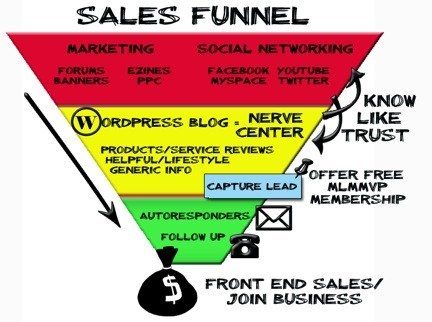
And here’s a streamlined (and sideways) variation from McKinsey & Company:
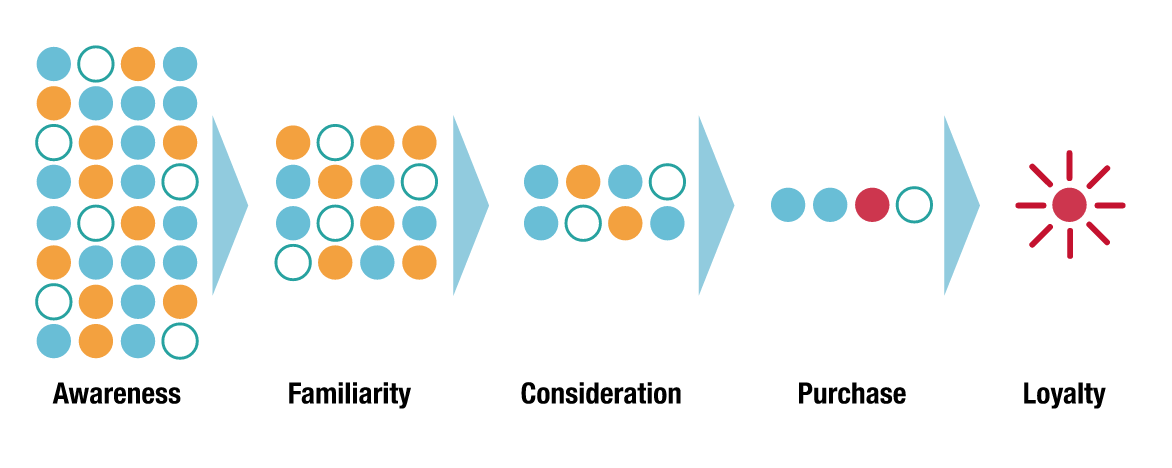
So where does social media fit in these funnels?
In my experience, social media has typically appeared at the top, at the exact polar opposite from the sale. Maybe it’s no wonder then that bosses, clients, and teams have a difficult time being fully on board with prioritizing social as a channel. According to the funnel, you don’t make your money from social — at least, not directly.
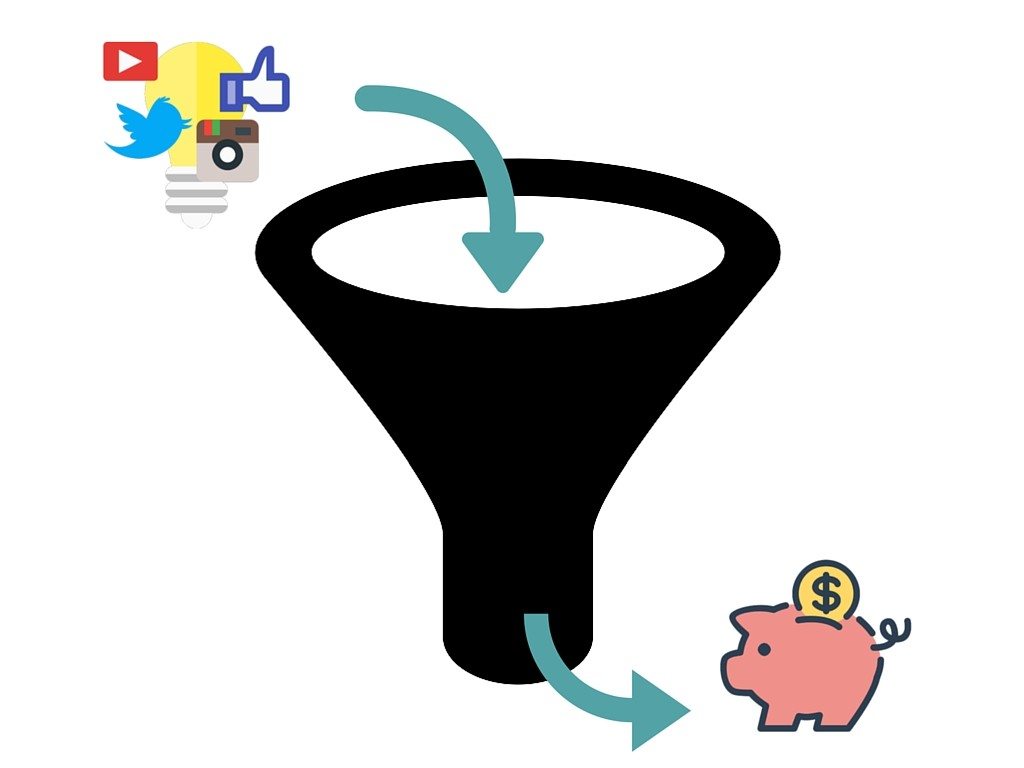
Unless …
Maybe it’s not as cut-and-dry that social is always top-of-funnel?
Maybe it’s not as cut-and-dry that there even is a funnel!
Some of these thoughts have a bit of data behind them, thanks to an exploration from McKinsey & Company where they analyzed more than 20,000 customers and how they experienced the sales funnel. McKinsey & Company found that the funnel might be more of a circle.
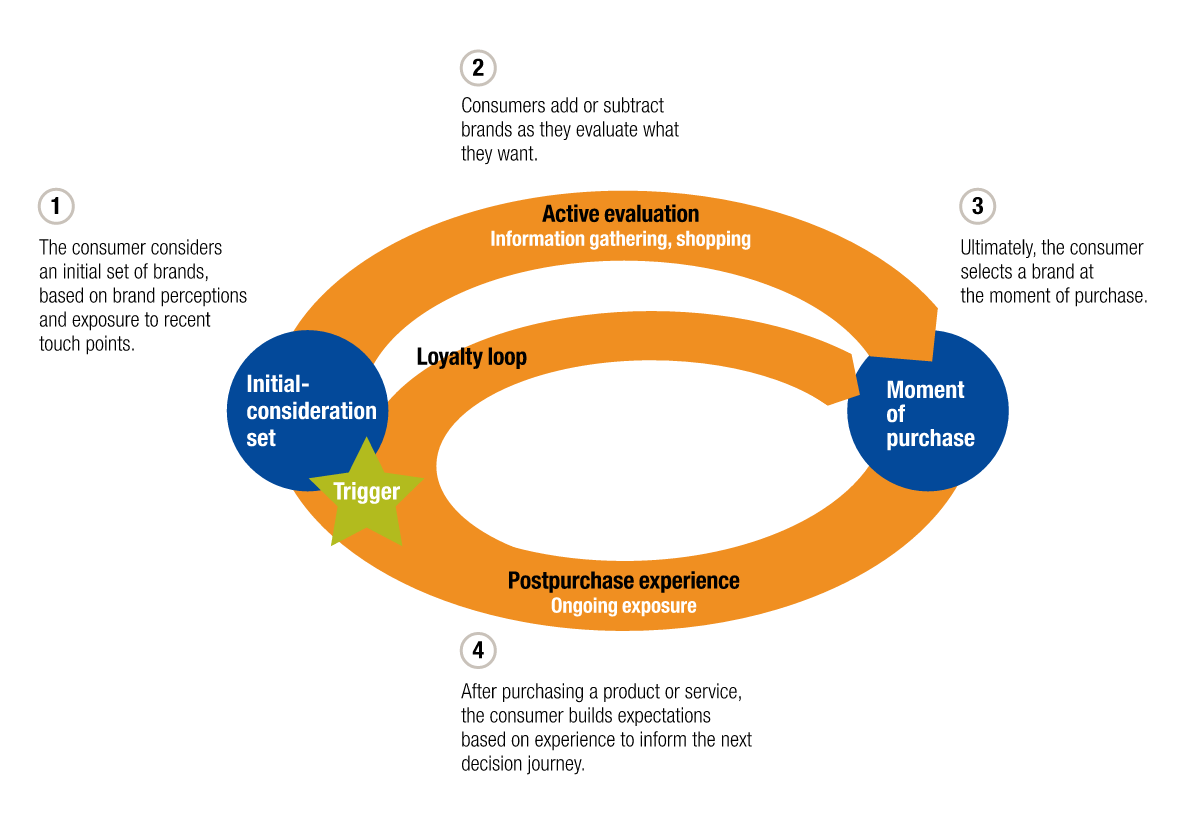
The funnel concept fails to capture all the touch points and key buying factors resulting from the explosion of product choices and digital channels, coupled with the emergence of an increasingly discerning, well-informed consumer.
This leads to four primary phases of the circular buyer journey:
- Initial consideration
- Active evaluation (researching potential purchases)
- Closure (purchasing)
- Postpurchase (the experience with the product, service, or brand)
Even here, while there is less of a top-down approach in this model, still social media primarily appears only at the beginning, in the Initial Consideration phase.
How does this jive with your experience with social?
For us, we’ve observed a slightly different take on things, both with where social media fits within the funnel and possibly with social media having a funnel of its very own. I’d love to share more.
How to Make a Funnel in a World Where Funnels Don’t Exist
We believe that social media doesn’t always have to be top of funnel. Or that there even is a funnel!
We’ve seen plenty of social media strategies that bring traffic into the top of the funnel, and we’ve personally tried plenty of others that fit in the middle (social media customer service, AMAs and live chats, etc.) …
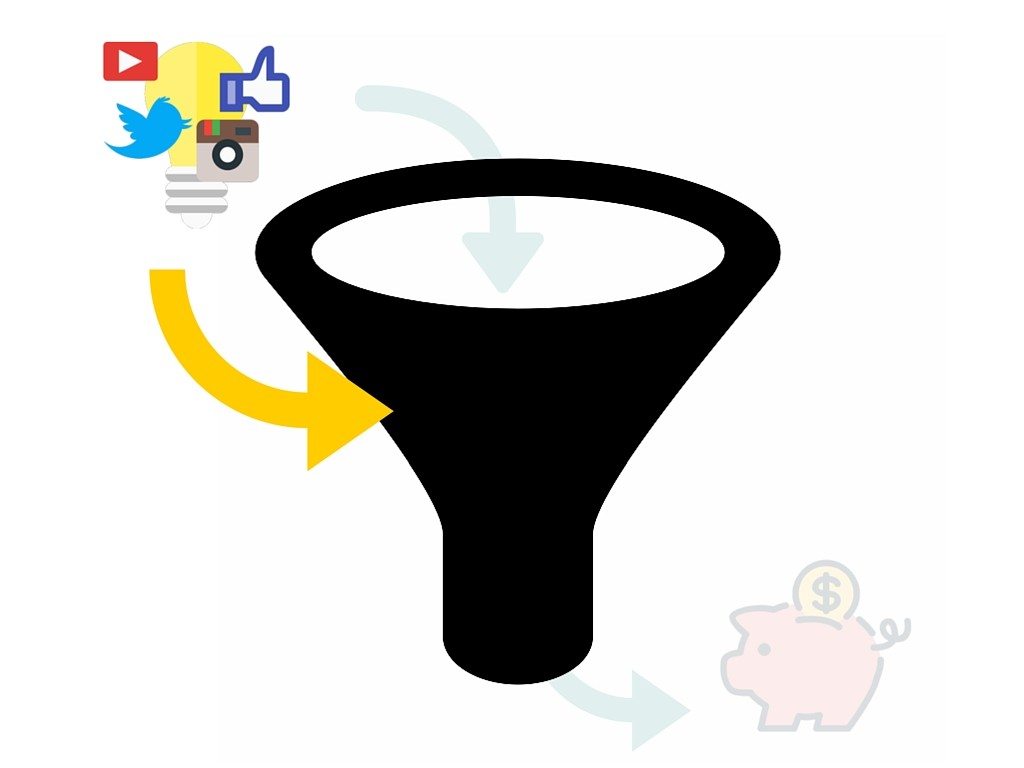
… and even some that fit at the bottom (things like the Pinterest Buy button, for instance).
From what we’ve seen, there are just so many different types of interactions on social media that it’s hard to pigeonhole social into any particular element of the funnel.
Social media covers the full spectrum of the buying process, everything from awareness all the way through to advocacy.
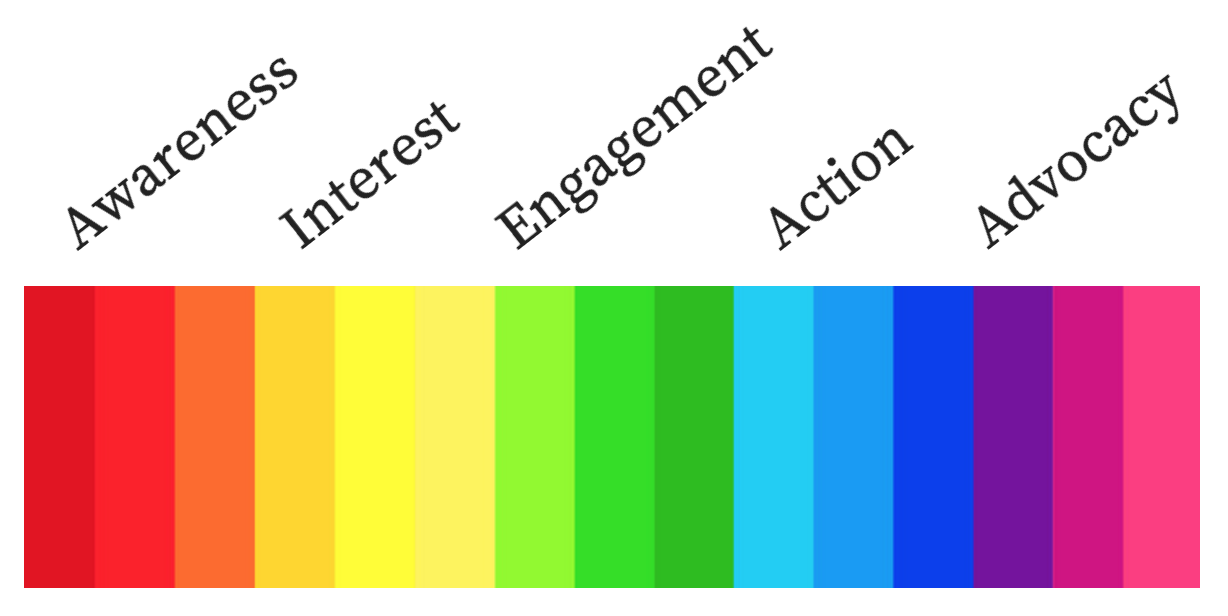
And what’s more, we’ve seen that social media has its very own funnel.
Everything on this spectrum from viewing a profile to selling a product can happen with social media. Just as a user moves through from awareness to interest to engagement and beyond, so too does a social media lead go from viewing to following to interacting to buying.
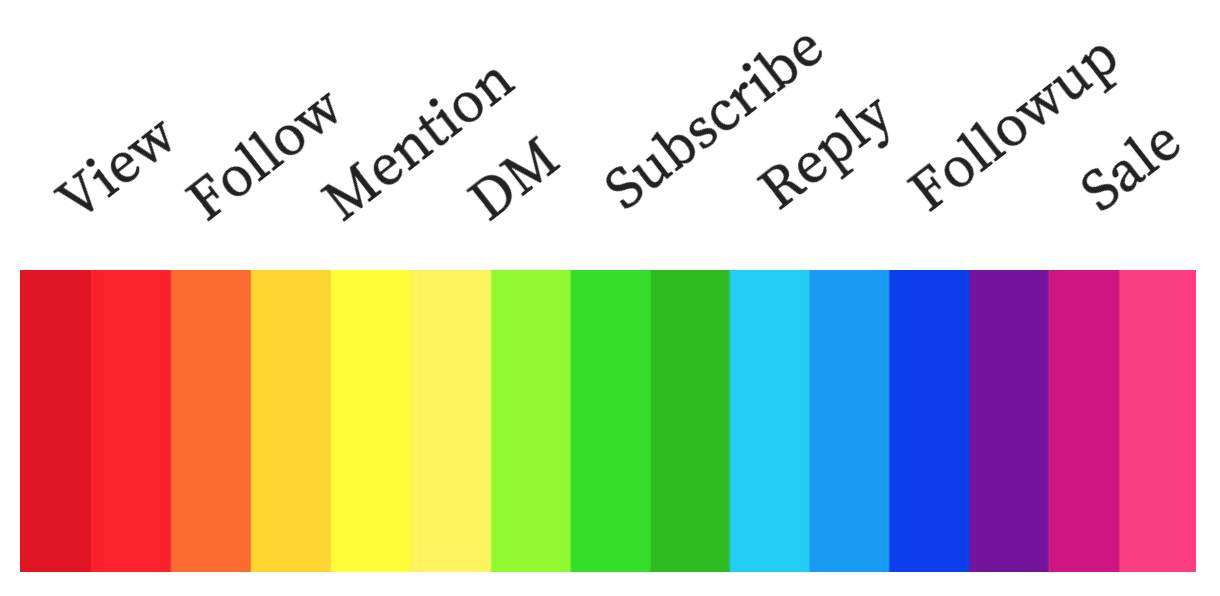
What does this mean for the traditional funnel?
Well it’s certainly still a valuable exercise to think through the buyer’s journey (more on those exercises below). At the same time, it might feel great to recognize that your customers — especially those from social media — are taking a less-and-less linear journey toward closing the deal.
How to create your very own funnel
We feel there is no one right way to make a funnel. Every brand is different, and every potential buyer’s journey is unique.
It can still be useful to examine and reflect on how customers become customers and how your marketing efforts helped them get there. One of the most helpful series of questions that I’ve come across is this set from Eric Siu. Reflecting on each different stage of the buyer’s journey, he asks:
- How do customers at this stage find me?
- What kind of information do I need to provide to help them move from one stage to the next?
- How do I know if they have moved from one stage to another?
Answering these questions will go a long way toward settling in with a uniquely “you” sales funnel. Here are a few options for getting a very official or unofficial funnel in place.
The traditionalist’s view on sales funnels
“Here’s the blueprint for making a funnel”
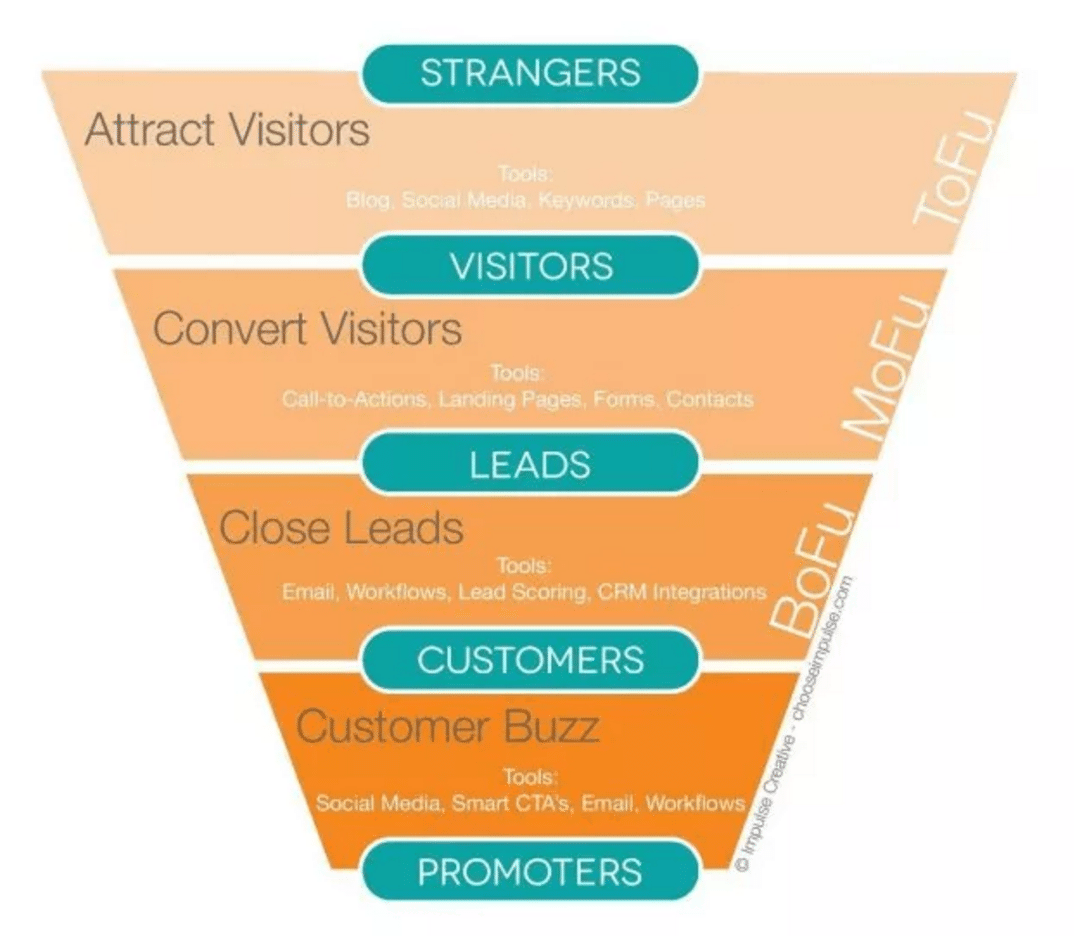
- Create buyer personas based on stats and interviews of your most successful customers
- Identify the different segments of your funnel, how you’d ideally want a customer moving through their journey
- Create different types of content for different types of customers and different funnel areas (top, middle, bottom)
- Choose KPIs for each segment of your funnel so you can …
- Measure and …
- Iterate
The above graphic from Visual Website Optimizer makes for a pretty standard-looking sales funnel.
Strangers → Visitors → Leads → Customers → Promoters
Attract → Convert → Close
It’s been said any number of additional ways, too: Awareness → Consideration → Decision; Acquisition → Activation → Absorption; TOFU→ MOFU→ BOFU; etc. And it turns out that different customers progress through these stages in different ways, perhaps starting at the top and working down (classic) or jumping back and forth between stages (unorthodox).
The traditional sales funnel process starts with an understanding of your buyers.
Then it transitions into choosing the different parts of your funnel (the TOFU, MOFU, BOFU parts above).
Then you can determine the content, both based on the type of buyer you have in mind …
Analytical thinkers appreciate having all the facts, and will read thoroughly to get them. Whitepapers, use cases and case studies are great for these buyers.
Impulsive buyers don’t want to read everything – they just need the gist, preferably in bullet-points.
… and the location in the funnel.
TOFU
- infographics
- blog posts
- articles
- video, presentation, podcasts
MOFU
- Guides and ebooks
- webinars
- expert interviews
- whitepapers, analyst reports, case studies, use cases
BOFU
- customer testimonials and endorsements
- demos
The different KPIs for each section will help you determine how customers are interacting with your content within the funnel, what’s working and what’s not. In general, the following KPIs tend to make for great choices at different stages:
TOFU
- Growth in traffic
- New vs. returning visitors
- Sources
- Social reach
- Visits and social shares
- Email CTR
MOFU
- Social engagement
- Lead gen and conversion
- Visitor to lead ratio
- Bounce rate & time on page
BOFU
- Sales!
And when it comes to analyzing this data to see what works, one great way to further evaluate is with a matrix of the types of visitors, leads, and customers you’ve been able to pull in.
Here’s a matrix from Eric Siu’s article:
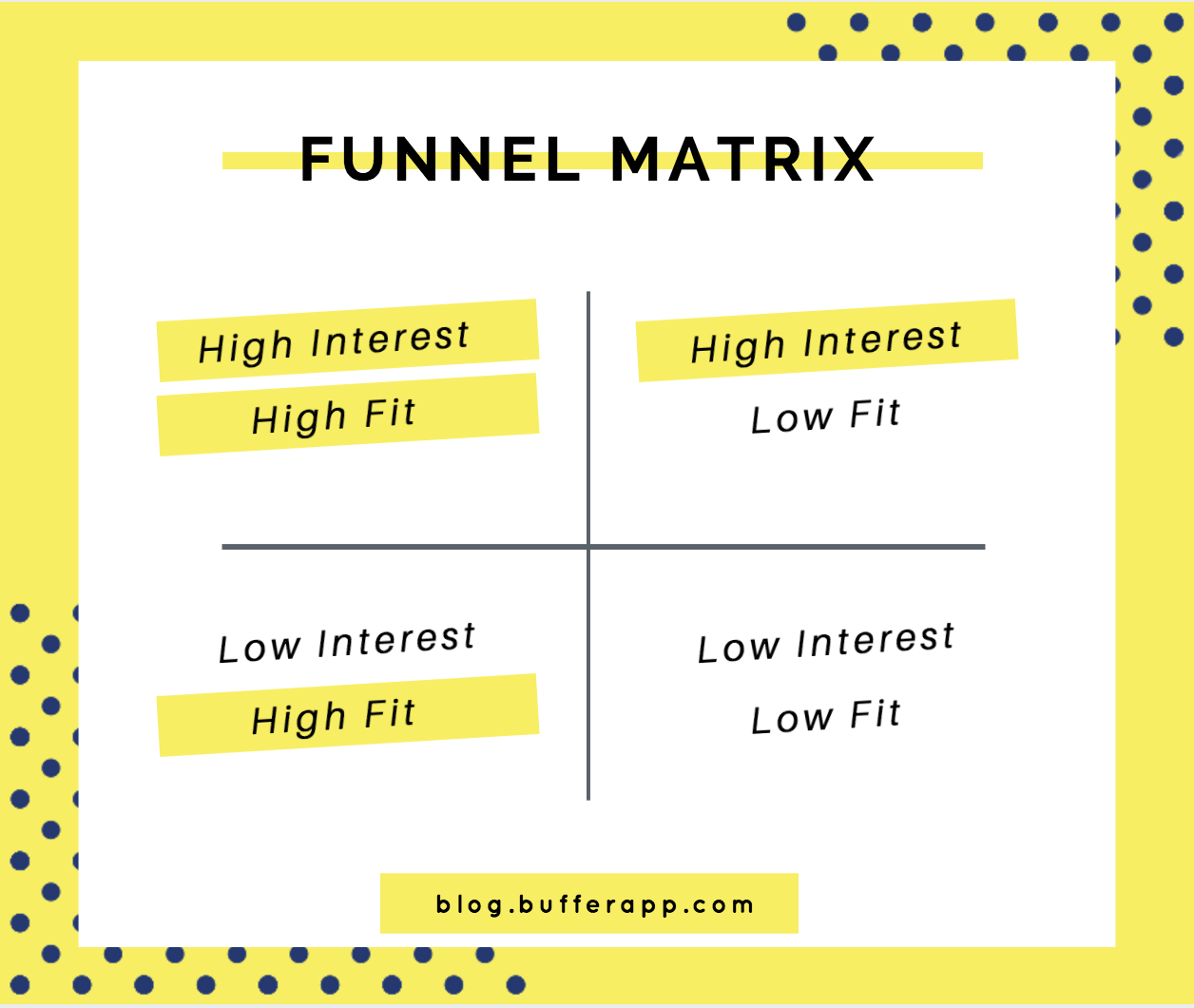
Low interest and low fit – The leads don’t meet your company’s target criteria and are unlikely to make a move soon. A common example of these types of leads is the low level employee who’s browsing solutions out of curiosity, not an immediate need.
High interest and low fit – These MQLs are often people who are searching for a solution, but are unlikely to ultimately go with yours. If, for example, you sell a cloud-based software program and the prospect will clearly be more comfortable with a desktop solution, you could be dealing with this type of MQL.
Low interest and high fit – Typically, these leads closely resemble your target customer, but aren’t actively seeking solutions. Even though they may not be a good fit right away, it may still be worth pursuing them to create brand awareness that will pay off down the road when their need becomes apparent.
High interest and high fit – These MQLs are the “sweet spot” of people who are actively seeking your type of solution and are likely to convert to buyers. These leads should be the highest priority of your sales team.
The contrarian’s view on sales funnels
“There is no funnel!”
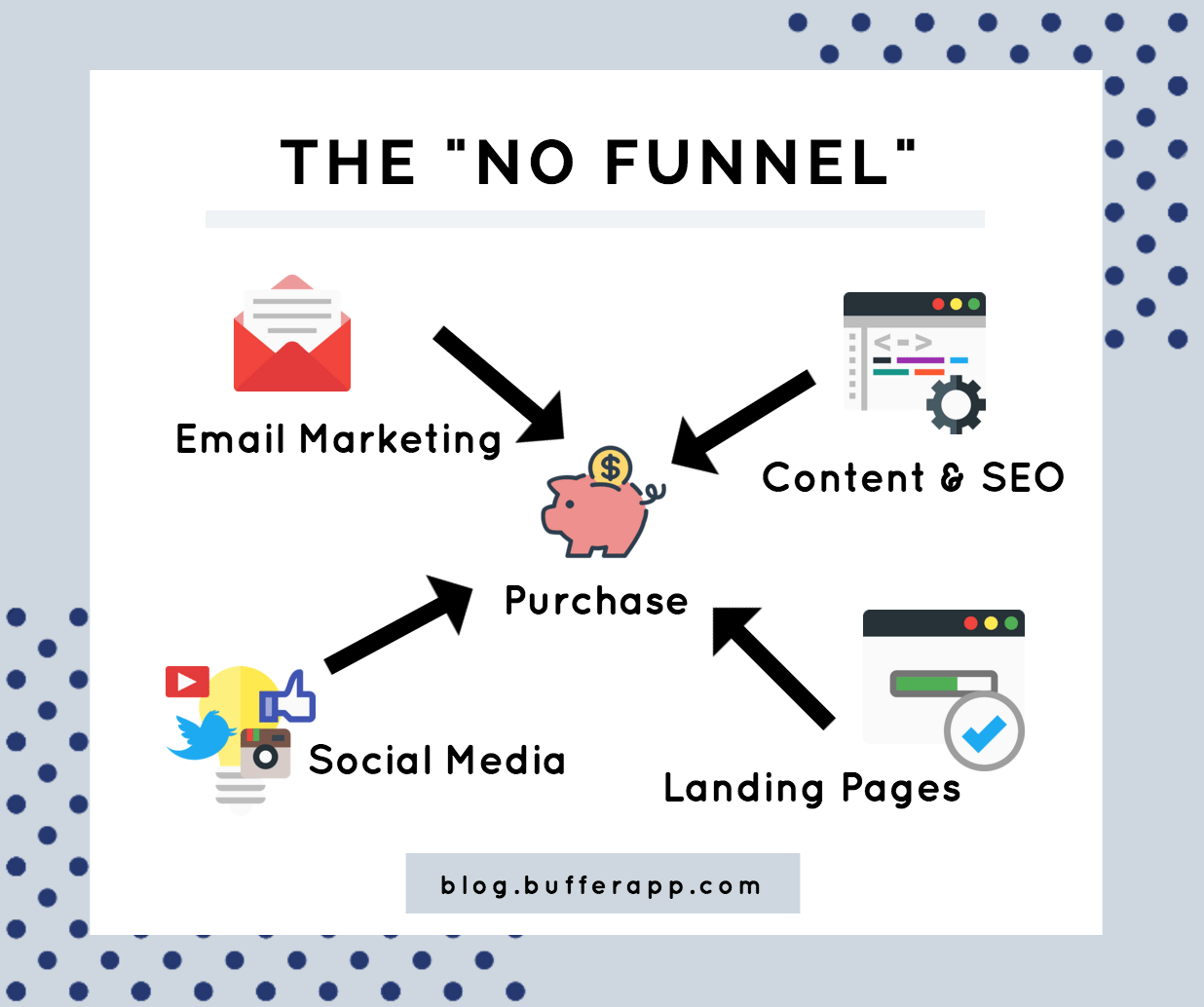
or

- Keep doing what works
- Trust that things will work out
We take a lot of inspiration from our friends at MailChimp, who came up with the idea of an upside down funnel.
I could also see it being the case that some companies might not want to have any funnel whatsoever.
A couple years ago, there was an interesting article on Harvard Business Review talking about how the funnel is no longer an accurate way to describe a buyer’s journey. And I have the sense that things have only become more muddied with online marketing in the two years since!
Consider items that come recommended on an e-commerce site. With a click you can add them to your cart, moving straight from awareness through consideration to purchase in only a few seconds. The same holds true on items discovered in a Tweet, Facebook post, or Pinterest board.
In both B2B and B2C businesses, customers are doing their own research both online and with their colleagues and friends. Prospects are walking themselves through the funnel, then walking in the door ready to buy.
In this way, there really is no traditional funnel. Everyone’s journey is unique.
And the takeaway for marketers is to simply keep on doing what you’re doing. Find what’s working well and double down, without thinking too much about how the funnel is supposed to look.
The minimalist’s view on sales funnels
“A funnel exists. Let’s not get too crazy about it.”
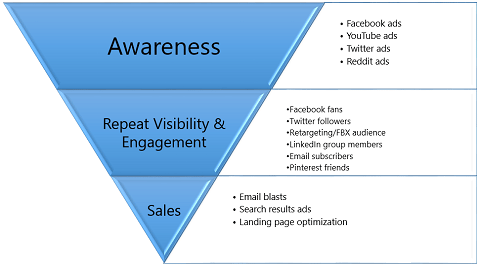
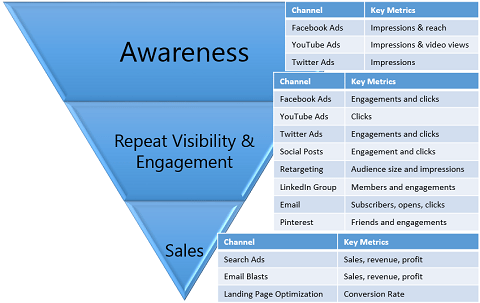
- Define and implement channels and jobs
- Assign and measure key metrics
- Test and iterate
Many thanks to Social Media Examiner for this idea; I found their guide on the social media sales funnel to be wonderfully concise and easy to follow, like a minimalist’s version of a funnel.
There’s not a lot of heavy lifting to get set up. Here’s how to get started:
Start by making a list of all the different social media marketing channels you’ve currently got going on.
In our case at Buffer, this would be something like:
- Social profiles
- Social media customer service
- Branding
- Lead gen cards
- Social posts
- Social media contests
- Facebook ads
- #bufferchat
Then figure out what one goal each of these have, relative to some of the aspects of a buyer’s journey. I’ll use the “Acquisition > Activation > Absorption” method.
- Social profiles – Acquisition
- Social media customer service – Acquisition
- Branding – Acquisition
- Lead gen cards – Activation
- Social posts – Activation
- Social media contests – Activation
- Facebook ads – Absorption
- #bufferchat – Absorption
Once these categories are in place, you then add your key stats to each area so that you can monitor the success and performance of each. This’ll be critical later on when you come back to analyze your tests and experiments.
Here’s an example of what the finished product might look like for us at Buffer:
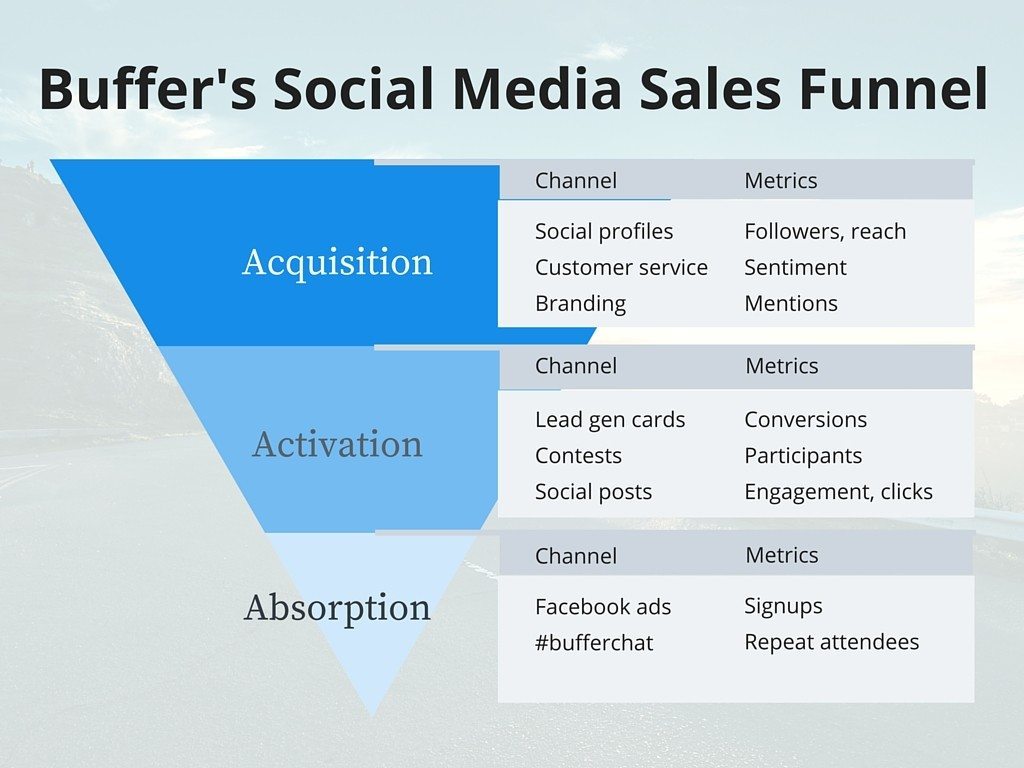
What happens next? How to get the most from your funnel
Once the sales funnel is in place (or, never mind if you’re working from the contrarian model), now comes my favorite part: Testing!
Knowing the KPIs for each channel and section of your funnel makes it super simple to run experiments and see what works. We’re big fans of the Brian Balfour growth machine here at Buffer. There’re a ton of other frameworks that might be helpful, too.
Some of my favorite tips on what to try come down to the different types of materials to test at different stages of the funnel.
Susan Su of 500 Startups has some awesome ideas here, especially. These are a few favorites:
Keep in mind that most ppl buy on the backend:
– capture emails w/ clear CTA + offer
– send clicks to a targeted landing page
– welcome / activation messages that are offer- and landing-page specific
and
Increasing conversion rates from 0.9% to 1.1% doesn’t matter if only 100 people come to ur site every day.
Much more important is getting 1,000 people (OR TEN THOUSAND PEOPLE) in the top of ur funnel every day.
If ur early, aim to 3X ur One Metric That Matters. U can always micro-optimize later.
and
Use lead magnets (special offer in exchange for email, more info or addnl engagement) that are tailored to each stage of your conversion funnel.
1. TOFU (top of funnel) – convert visitors into leads.
– cheat sheet or checklist
2. MOFU (middle of funnel) – separate true leads from mildly interested prospects
– white papers or case studies
3. BOFU (bottom of funnel) – CONVERT.
– trial offer or promo
Final thoughts and your thoughts!
As you can see, there are huge number of ways to think about sales funnels — if you want to think about them at all!
- Traditional funnels where social media fits at the top
- Minimalist, social-only funnels
- Circular buyer’s journeys
- Upside-down funnels
- No funnels at all!
I’m excited to say that you can pursue any of these paths you want, whatever makes the most sense for you and your brand.
What do you currently have in place? What might you try out?
I’d love the chance to learn a bit more from you. Feel free to leave a comment below or drop me a note on Twitter. Thanks a million for reading!
Image sources: VWO, Impact, McKinsey, SME, Iconfinder
Try Buffer for free
190,000+ creators, small businesses, and marketers use Buffer to grow their audiences every month.



